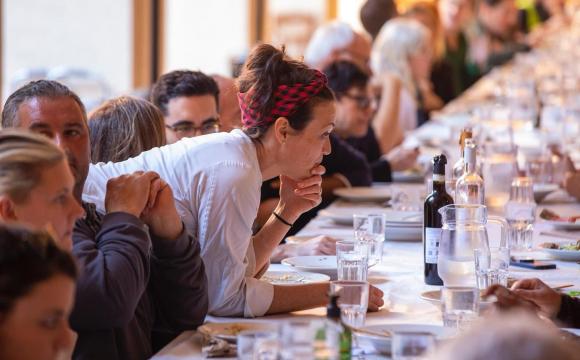
The internationally renowned Italian Abstract artist Afro Basaldella is the star of a new, two-part exhibition celebrating his life and marking 30 years since his death.
The show, which opens on November 25, brings together 140 paintings, not only by the Italian artist but also by a number of his contemporaries.
It explores the various artists that worked with him, as well as the movements that interacted with and shaped his style, with a particular emphasis on his international dimension.
The exhibition will be divided between the northern Italian cities of Udine and Pordenone, with each part looking at a different aspect of his work.
The Udine section, to be staged in the former church of San Francesco, focuses on the close US ties enjoyed by the artist, usually known simply as Afro.
Born in Udine in 1912, Afro's work was being exhibited by the time he was just 16. By 18, he had won a scholarship to study art in Rome and had had paintings displayed in three Biennials by 1949, when he burst onto the US scene.
Afro's work first appeared at New York's MOMA in an exhibit entitled '20th-Century Italian Art', followed by a show in 1950 featuring art by five Italian painters.
During this period, he formed close ties with American artists and enjoyed considerable critical acclaim, seeing his work purchased by several art museums.
The Udine exhibition uses this early foray into the US as a springboard for exploring ties that lasted throughout his life.
He spent seven separate periods in the States over the next two decades but despite this, his work remained strongly rooted in his Italian background.
"Afro remained Afro," commented the exhibit's curator Luciano Caramel.
Caramel added that although the show includes paintings by other US-based artists who worked with Afro - such as Willem de Kooning, Jackson Pollock and James Brooks - these tend to highlight the Italian's unique approach to Abstractionism.
The other section of the exhibition is being staged in Pordenone's Modern Art Gallery, and looks at Afro's ties in Italy.
"We have tried to ensure that visitors only see work by artists who had genuine, documented links with him," said Caramel.
Afro's formative years are explored alongside paintings by his brothers, Mirko and Dino, both artists in their own right.
During his time in Rome in the 1930s, "the choice fell on Corrado Cagli, Mario Mafai and Alberto Ziveri, as well as Renato Guttosi - with whom he had an intense dialectical dialogue, which soon turned confrontational," said Caramel.
The exhibition continues by looking at Afro's involvement in different movements, such as the Group of Eight in the 1950s, which reflected his search for "concrete abstractionism".
He also became a member of the Origin Group, alongside Alberto Burri, with whom he had close ties.
The exhibition wraps up with a selection of other well-known Italian artists, with a particular emphasis on Lucio Fontana, who had a strong impact on Afro's work.
Afro. Italia-America. Incontri e Confronti (Afro. Italy-America. Meetings and Comparisons) runs until March 19, 2007.












